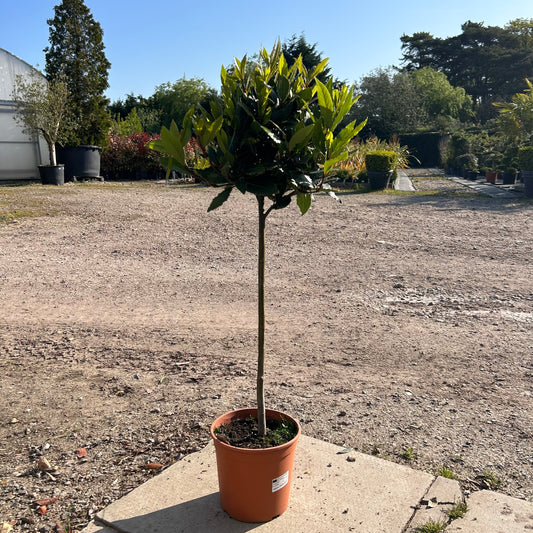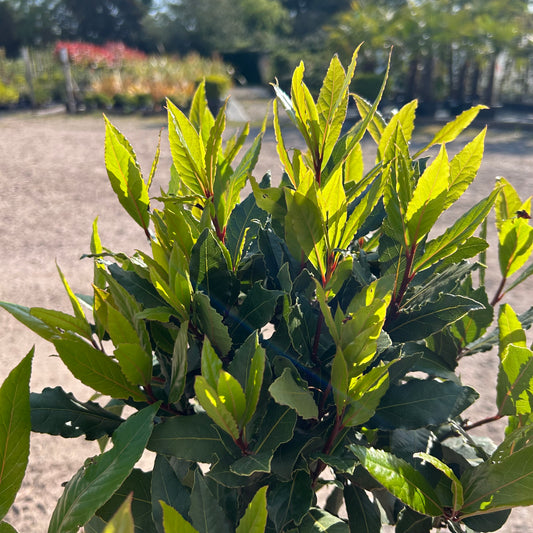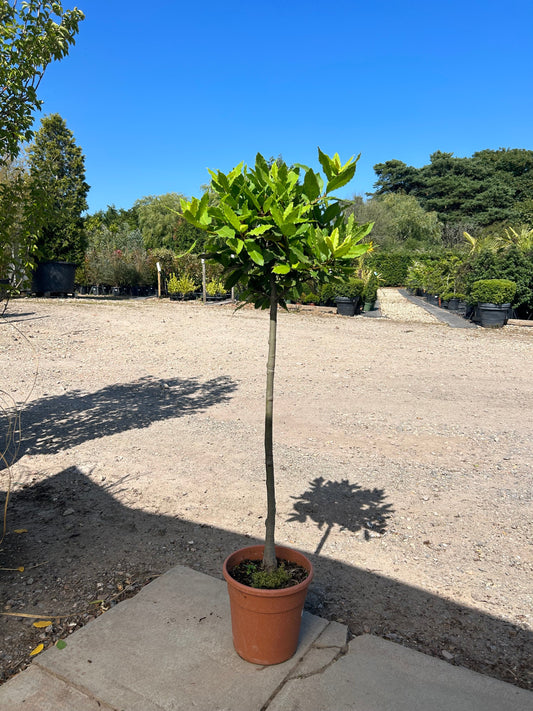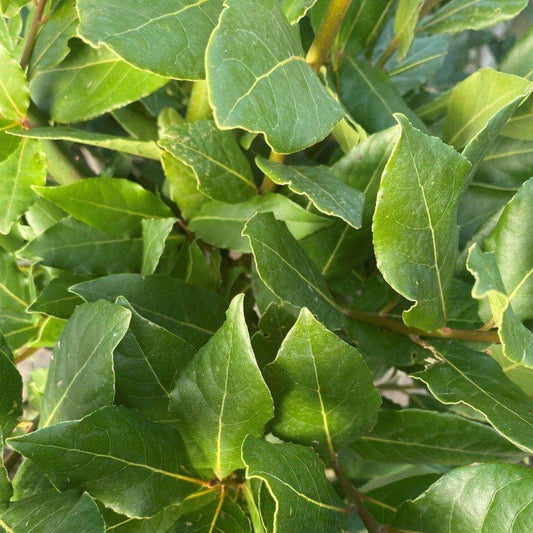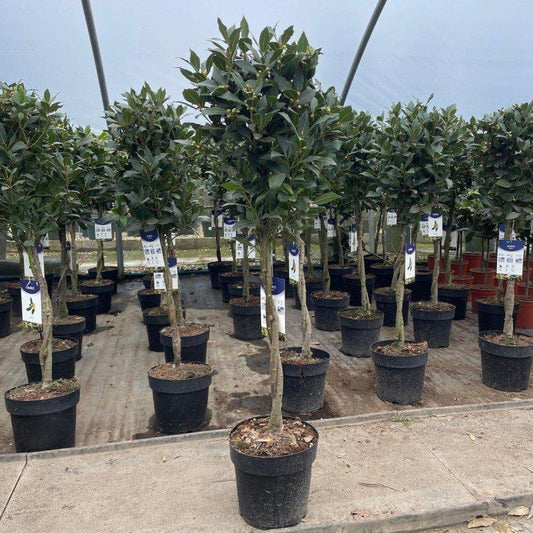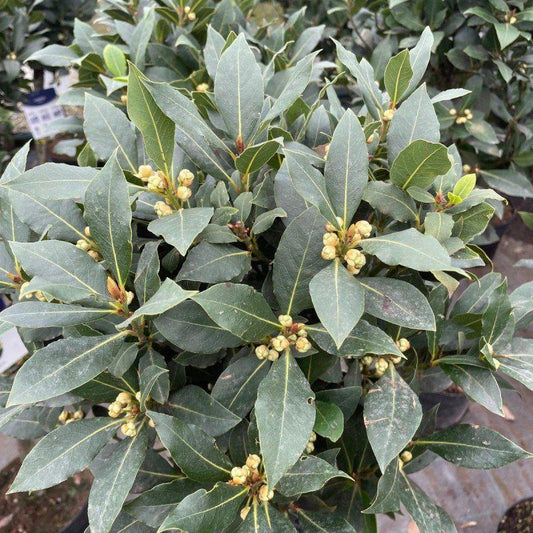Understanding Festuca Glauca
Festuca glauca, commonly known as blue fescue, is a stunning ornamental grass that adds a unique touch to UK gardens. This perennial plant belongs to the Poaceae family and is prized for its striking blue-grey foliage.
Blue fescue is a compact grass, typically growing in small, dense tussocks. Its slender leaves create an attractive mound shape, making it perfect for borders, rock gardens, and container plantings.
We love blue fescue for its versatility and low maintenance nature. It's a hardy plant that can withstand various weather conditions, making it ideal for UK climates.
One of the best features of Festuca glauca is its evergreen nature. This means it retains its beautiful blue-grey colour throughout the year, providing interest in winter when other plants may be dormant.
Key characteristics of blue fescue:
- Height: 20-30 cm
- Spread: 20-30 cm
- Foliage colour: Blue-grey
- Flowering period: Early summer
- Hardiness: Fully hardy
Blue fescue is not just about looks. It's also a practical choice for UK gardeners. Its drought-tolerant nature means it can thrive in well-drained soils with minimal watering once established.
Planting and Site Selection
Festuca glauca thrives in specific conditions. We'll cover the ideal location and soil preparation to help your blue fescue flourish in UK gardens.
Choosing the Right Location
Blue fescue needs full sun exposure for optimal growth. We recommend selecting a spot that receives at least 6 hours of direct sunlight daily. This grass is perfect for rock gardens, borders, or containers.
It's quite tolerant of coastal conditions, making it suitable for seaside gardens. The plant's compact size allows for versatile placement. We suggest using it as a border edging or in groups for a striking visual effect.
Blue fescue is also an excellent choice for slopes or areas with poor soil. Its deep roots help prevent erosion.
Soil Requirements and Preparation
Festuca glauca prefers well-drained soil. We advise preparing the planting area by improving drainage if needed. Add organic matter or grit to heavy clay soils to enhance drainage.
This grass tolerates a range of soil pH levels, from slightly acidic to alkaline. However, it performs best in neutral to slightly alkaline soils. If your soil is very acidic, we recommend adding lime to raise the pH.
Before planting, dig holes about 20-25 cm deep. Mix in compost or well-rotted manure to enrich the soil. This provides a nutrient boost for young plants. Space plants 30-45 cm apart to allow room for growth.
Caring for Your Blue Fescue
Blue fescue is a low-maintenance grass that thrives with proper care. We'll cover the key aspects of watering, feeding, and pruning to keep your Festuca glauca healthy and vibrant.
Watering and Moisture Management
Blue fescue prefers well-draining soil and doesn't tolerate soggy conditions. We recommend watering deeply but infrequently to encourage strong root growth. During the first growing season, water regularly to establish the plant. Once settled, blue fescue becomes quite drought-tolerant.
In the UK's climate, natural rainfall often suffices. However, during dry spells, especially in summer, we should water when the top inch of soil feels dry. Be careful not to overwater, as this can lead to root rot.
For potted blue fescue, ensure proper drainage holes and use a well-draining potting mix.
Feeding and Fertilisation
Blue fescue doesn't require heavy feeding. We suggest applying a slow-release, balanced fertiliser in early spring before new growth emerges. Use a 10-10-10 NPK ratio or similar.
Avoid over-fertilising, as this can cause excessive growth and reduce the plant's distinctive blue colour. In poor soils, a light top dressing of compost in spring can provide nutrients and improve soil structure.
If your blue fescue is growing in containers, feed it monthly during the growing season with a diluted, balanced liquid fertiliser.
Pruning and Maintenance
Regular pruning keeps blue fescue looking tidy and promotes fresh growth. We recommend cutting back the foliage to about 2-3 inches above ground level in late winter or early spring before new growth begins.
Remove any dead foliage throughout the growing season to maintain the plant's appearance. This also improves air circulation, reducing the risk of fungal diseases.
In early summer, after flowering, trim off the spent flower stalks to keep the plant looking neat. Every few years, consider dividing large clumps to rejuvenate the plant and maintain its compact form.
Managing Growth and Division
Festuca glauca needs regular maintenance to stay healthy and vibrant. Dividing the plant helps control its size and rejuvenates it.
When and How to Divide Clumps
We recommend dividing Festuca glauca clumps every 2-3 years in early spring. This keeps the plant looking its best and prevents overcrowding.
To divide, we first water the plant well a day before. Next, we dig up the entire clump and gently pull it apart into smaller sections. Each division should have several stems and a good root system.
We then replant the divisions in well-draining soil, spacing them about 30 cm apart. It's crucial to water the new plants regularly until they're established.
Blue fescue works well with other rock plants in gardens. Its compact height of about 20-30 cm makes it perfect for borders or as ground cover.
After division, we trim the ornamental grass to about 10 cm tall. This encourages fresh growth and maintains its neat appearance.
Common Issues and Their Solutions
Festuca glauca can face a few challenges in UK gardens. Let's look at how to tackle diseases, pests, and growth problems to keep your blue fescue looking its best.
Dealing with Disease and Pests
Blue fescue is quite drought-proof, but too much moisture can lead to issues. We often see fungal diseases in wet conditions. To prevent this, ensure good drainage and avoid overwatering. If you spot any brown or yellow patches, trim them off quickly.
Pests aren't a big worry for Festuca glauca. But keep an eye out for slugs and snails in spring. They may nibble on new growth. Use organic slug pellets or beer traps to control them.
In autumn, remove dead foliage to stop pests from hiding there over winter. This also keeps the plant looking tidy.
Addressing Poor Growth and Colour
Festuca glauca thrives in full sun. If your plant loses its intense blue colour, it might need more light. Move it to a sunnier spot if possible.
Poor soil can also affect growth. Blue fescue likes well-drained, light soil. If you have heavy clay, mix in some grit to improve drainage.
As plants age, they can become tatty-looking. Every few years, divide the clumps in spring. This refreshes the plant and boosts growth.
In dry spells, water deeply but less often. This encourages deep roots and makes the plant more drought-tolerant.
Varietal Selection and Unique Cultivars
Festuca glauca offers gardeners a range of options to suit different tastes and garden styles. We'll explore some standout varieties that can add texture and colour to UK gardens.
Noteworthy Varieties of Festuca Glauca
The 'Elijah Blue' cultivar is a popular choice for its striking blue-green leaves. This compact variety forms neat mounds and is ideal for borders or rock gardens.
'Casblue' is another excellent option, known for its intense blue colouration. It's particularly suited to drought-prone areas and requires minimal maintenance.
For those seeking a more traditional look, the species Festuca glauca offers steel blue flower-heads in summer, adding vertical interest to plantings.
We mustn't forget about the dwarf grasses within this species. These compact forms are perfect for small spaces or as ground cover. They blend well with other low-growing plants in rock gardens or alpine troughs.
When choosing a variety, consider the mature size and colour intensity that best suits your garden design. All these cultivars share the species' drought tolerance and low maintenance needs, making them excellent choices for UK gardens.
Frequently Asked Questions
Festuca glauca, commonly known as Blue Fescue, requires specific care in the UK climate. We'll address common concerns about winter protection, pruning, colour changes, planting, year-round care, and troubleshooting issues.
How should one care for Festuca glauca during a UK winter to ensure its vitality?
Blue Fescue is fully hardy in the UK, withstanding low temperatures well. We recommend mulching around the base of the plant with organic matter to protect the roots from frost.
Good drainage is crucial to prevent waterlogging, which can harm the plant more than cold. In areas with heavy clay soil, we suggest adding grit to improve drainage.
Is it necessary to prune Blue Fescue, and what is the best time of year to do so in the UK?
Pruning is beneficial for Festuca glauca. We advise cutting back the foliage in early spring, just before new growth begins. This helps maintain the plant's shape and removes any dead or discoloured leaves.
Use clean, sharp shears and cut the grass to about 10 cm above ground level. This encourages fresh, vibrant growth for the coming season.
What are the reasons for Festuca glauca 'Intense Blue' turning green, and how can this be remedied?
Several factors can cause Blue Fescue to lose its blue colour. Excessive shade, over-fertilisation, or too much water are common culprits.
To remedy this, we suggest moving the plant to a sunnier location. Reduce watering and avoid high-nitrogen fertilisers. These steps can help restore the plant's signature blue hue.
What are the planting guidelines for Festuca glauca 'Intense Blue' in the UK?
When planting Festuca glauca 'Intense Blue', choose a spot with full sun and well-draining soil. We recommend digging holes 20-25 cm deep and spacing plants about 30 cm apart.
In heavy clay or sandy soils, add organic matter to improve drainage and fertility. Water thoroughly after planting, but allow the soil to dry between waterings to prevent root rot.
How can one maintain the evergreen nature of Festuca glauca throughout the various UK seasons?
To keep Blue Fescue looking its best year-round, regular grooming is key. We suggest gently combing through the foliage with your fingers to remove dead leaves.
Ensure the plant receives enough sunlight, as shade can cause the colour to fade. In autumn, clear fallen leaves from around the base to prevent fungal issues.
Why might Festuca glauca display signs of browning, and what steps can be taken to address this issue?
Browning in Blue Fescue can be caused by various factors, including drought, overwatering, or pest damage. We recommend checking the soil moisture first. If it's too dry, increase watering. If it's waterlogged, improve drainage.
Inspect the plant for signs of pests or disease. Remove any affected parts and treat with appropriate measures if needed. In some cases, browning may be natural ageing, and dividing the plant can rejuvenate it.


